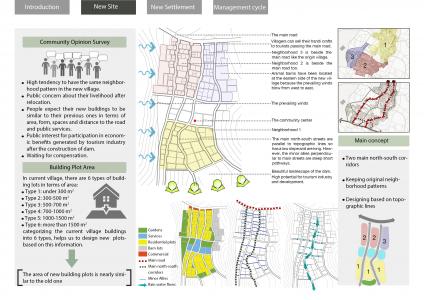| |
Turning threats into opportunities through participation
Firuzkuh, Iran
Niloofar Mohtat
Shahid Beheshti university, post-disaster reconstruction department, Tehran, Iran
Dr. Mohsen Sartipipur, Mina Eftekharnia
Full Document (PDF)
Abstract
|
Solebon, is a village in Arjmand district, Firuzkuh county, Tehran province, Iran. In 2005, the construction process of Namrud dam adjacent the village began. As a result, part of the village will go down into the dam basin so relocation is unavoidable. In the present research, site selection is conducted though SWOT technique in which environmental, social, economic and physical criteria are considered. Finally, the new site is selected based on people satisfaction, livelihood continuity, opportunity for creating new businesses, access to water and short distance to gardens, farming lands and the old village. Moreover, topographic lines and original village neighborhood patterns are the main factors for designing the new site. In addition, the area of new building plots is nearly similar to the old ones. For designing the new houses, a participatory approach adopted in which 3.5cm*3.5cm*3.5cm modules are given to people to put them together and suggest the form of their future home. In addition, by promoting vernacular knowledge of construction, the new buildings are earthquake resistant. About planning it should be mentioned that planning is done through three stages: 1) Capacity building before relocation 2) Using the host community capacities and paying cash at the time of relocation 3) supervision and monitoring after relocation.
|
| |

image of the settlement (architectural scale or example of unit)

image of the settlement (urban scale or group of housing units)

diagram of the actors involved and the relationships between them
|
|



